#royal history
Explore tagged Tumblr posts
Text
After the birth of Victoria & Albert's first child, their Uncle Leopold wrote to the Queen with congratulations and hopes that she and Albert would have a large family. In response, Victoria wrote:
"I think you will see with me the great inconvenience a large family would be to us all, and particularly to the country, independent of the hardness and inconvenience to myself; men never think, at least seldom think, what a hard task it is for us women to go through this very often."
Albert & Victoria would have nine children.
57 notes
·
View notes
Text

Alexandra of Denmark when Princess of Wales, Richard L. Lauchert, 1862.
#art#aesthetic#victorian#victorian fashion#alexandra of denmark#queen of england#english royals#royal history#historical fashion#art history#1860s fashion#fashion#1860s#gowns#dresses#fashion history#royal fashion#royal art#British art#British history
348 notes
·
View notes
Text

Felipe V of Spain (!!)
#sketch#doodle#17th century#bourbon anjou#house of bourbon#spanish monarchy#philip v of spain#digital art#historical art#historical figures#him being judgy k#kinda#artists on tumblr#royal history#18th century
55 notes
·
View notes
Text
The Birth of Philip Prospero Fanart

Philip Prospero was born on November 28, 1657, in the Royal Alcazar of Madrid. He was the first son of Philip IV of Spain and Mariana of Austria. His birth brought joy to the kingdom, but his delivery caused his mother to have childbed fever, which most did not notice because of their joy. Queen Mariana was bedridden for days after the birth and she survived.
On the day of the birth, not a bench nor a table was left unbroken in the palace, nor a single pastry-cook’s nor tavern that was not sacked. Tomorrow [December 6] they say that his Majesty will go on horseback to the Atocha to give thanks to the Mother of God… They say the prince is a pretty little chap, and that the King wishes him to be baptized at once, before the extreme cold comes on… There are to be masquerades, bull-fights and cane-tourneys as soon as the Queen stands up to see them, as well as plays with machinery invented by an engineer, a servant of the Nuncio, to be represented at the theatre of Retiro, and the saloon of the palace… The municipality, following the lead of the Councils, have gone to congratulate the King… and no gentleman, great or small, has failed to do the like.
His baptism was described to have some mishaps, starting with the Ceremonial Napkin carried by Condestable de Castilla, an unpopular military officer, He made a scene at Prospero's baptism in the following matter:
It seems that the crush of the people was so great that a staircase gave way; this disarranged the procession as it left the chapel, and in particular prevented the Duque de Bejar from taking his place and bearing away the "mazapan". The "mazapan" was not a sweet meat, but a lump of breadcrumb on which the officiating ecclesiastic wiped his fingers after anointing the child with holy oil. The bread was enclosed in a highly decorated reptacle made of marzipan and carried on a richly worked piece of needlework. It seems to be a object which evoked singular curiosity through little relevance. As the Duque de Bejar was unable to be its barrier, Philip was asked what should be done, he was told master of ceremonies to ask the Condestable De Castilla to substitute, This gentleman replied that he was sorry but he had an injured arm. Philip IV, furious, repeated his order, whereupon he replied, "The Condestable De Castilla are too exalted to fill the gaps and voids left by others. The Duque de Alburquerque carried the ewer, the Duque of Terranova, the salt sellar. Last came the Duque of Pastrana carrying on this occasion the famous mazapan. It was made in the shape of a castle with gold and silver ornamentation. The chrism is a mixture of oil and balm used to anoint the infant. Owing to its Sacrosanct Character, It was those days covered much coveted by ill-intentioned persons; hence the drops of chrism deposited on the bread crumb with the Mazapan might be stolen. The infant was naked at this baptism, At the baptism, the infant was unclothed, prompting the Infanta Maria Theresa to ask why she had to present her brother in this manner. It was explained that this tradition was a way to demonstrate his gender.
Source:
Carlos, A king who would not die by John Langdon Davis
#history#house of habsburg#spain#art#my fanart#habsburg#17th century#please like and reblog#Mariana's art#philip prospero#margarita teresa#maria theresa of spain#maria theresa#philip iv#baroque fashion#baroque#tw childbirth#mariana de austria#artists on tumblr#charles ii fanart soon#sorry for the delay#church#baptism#my art#spanish history#european history#royal history#mom and child
49 notes
·
View notes
Text

Grand Duchess Tatiana Nikolaevna Romanova in captivity in Tsarskoe Selo, Russia, April 1917. 💔💘
#my bbg <3#💘💘💘#tatiana nikolaevna#romanovs#romanov#russian imperial family#russian empire#imperial russia#tsardom of russia#grand duchess#russia#tsarskoe selo#romanovs in captivity#in captivity#royals in captivity#royal#royals#royal history#history#russian history#1917#1910s#april#spring 1917#april 1917
138 notes
·
View notes
Text

It's even more beautiful in real life. Albert was a real one for this design, I get it Vicky I really do.
#queen victoria#prince Albert#queen victoria sapphire coronet#sapphire coronet#sapphire and diamond coronet#queen victorias sapphire and diamond coronet#royal jewellery#brf#royal history#v and a#victoria and albert museum
45 notes
·
View notes
Text
Shortly before the Romanov Tercentenary celebrations in February 1913, Grand Duchess Tatiana Nikolaevna contracted typhoid, and spent much of February and March recovering.


On 21st February 1913 [O.S.] Tatiana wrote after an event in St. Petersburg that she had “a headache the entire time”. By the 24th, she had been confined to bed, and had to be carried by soldiers when the family returned to Tsarskoe Selo. From there, she was quarantined with Alexandra Tegleva, her nursemaid. Tatiana’s big sister, Olga Nikolaevna, wrote daily in her diary about Tatiana’s health, including her temperature, symptoms, and time they spent together.
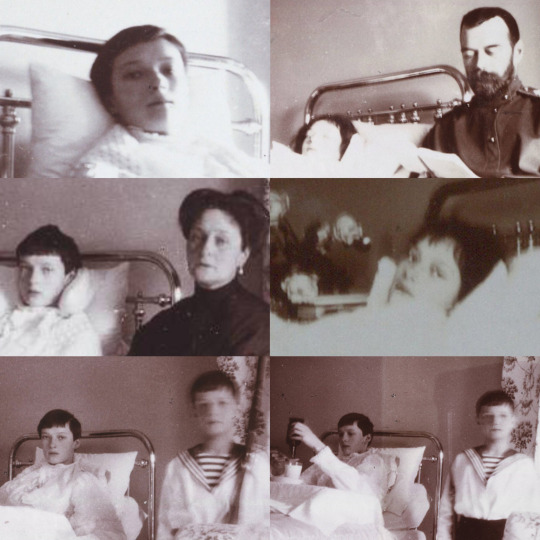
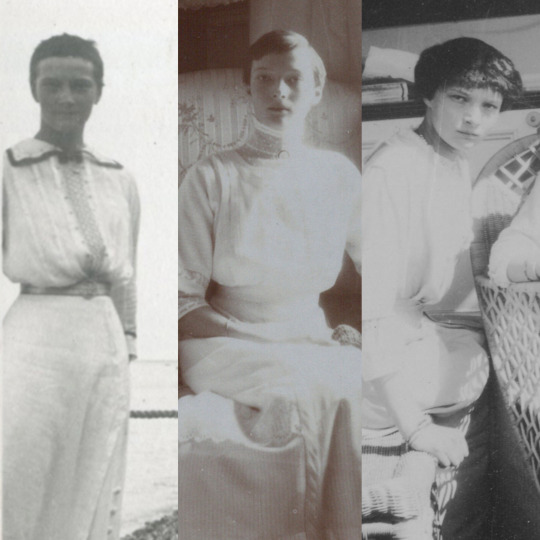
A common treatment after illness was to shave the head, as hair tended to fall out following a serious illness. On 5 March [O.S], Olga wrote in her diary that she sat with Tatiana, “who had her hair cut short.“

Tatiana wore a wig until December 1913, when Alexandra wrote to her brother and sister-in-law that “Tatiana’s hair has grown nice and thick, which means she no longer needs to wear a wig.” Some have claimed that Tatiana was embarrassed about her cropped hair, but the Grand Duchesses’ photograph albums illustrate a different view, that she was comfortable removing her wig around family, friends, and officers, as shown in these photos (see the first photograph of Tatiana taking off her wig on the Standart whilst on holiday in 1913).
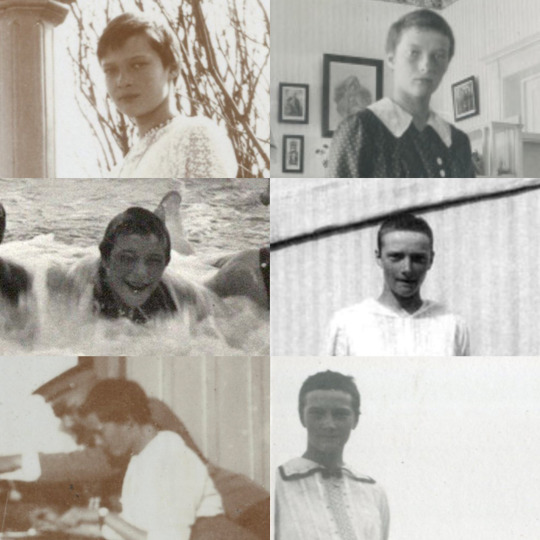
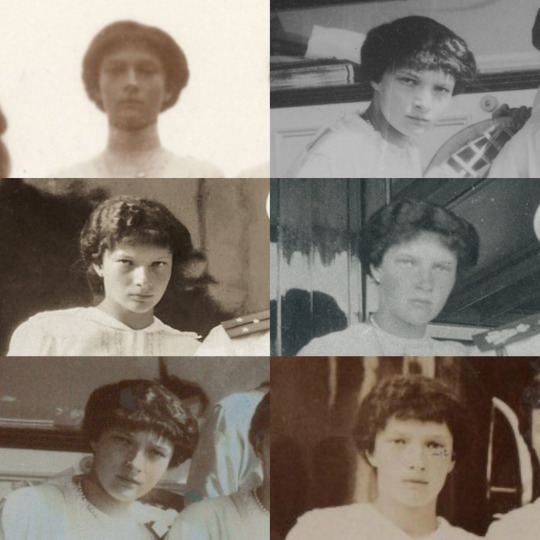
On 26 March 1913 [O.S.], Tatiana wrote in her diary “Could not write because got sick with Typhoid and they [doctors] forbade me to write.” By April, she had fully recovered in time for the Tercentenary.


Sources: Journal of a Russian Grand Duchess: Complete Annotated 1913 Diary of Olga Romanov - H. Azar Tatiana Romanov, Daughter of the Last Tsar: Diaries and Letters, 1913–1918 - H. Azar, N. B. A. Nicholson The Correspondence Of The Empress Alexandra Of Russia With Ernst Ludwig And Eleonore - P. H. Kleinpenning
#Tatiana Nikolaevna#Tatiana Romanov#Olga Nikolaevna#Olga Romanov#Alexandra Feodorovna#Romanov sisters#women's history#Royal history#hair history#my own#1913#Romanov Tercentenary#diaries#letters#sources
105 notes
·
View notes
Text

lol king james and his harem
#tony curran#mary and george#mary & george#king james#queer#homoeroticism#vlad troncea#joshua james#david boan#eoin quinlan#queer media#queer characters#royalty#royals#royal history#beautiful men
91 notes
·
View notes
Text
Richard of York: Somerset should have already been imprisoned in the Tower! Henry VI: Said I'll always be your friend Richard of York: The Court absolutely needs a reform… Henry VI: Know that we'll still have each other Richard of York: …to reduce expenses. Henry VI: You can stand under my umbrella Richard of York: Corpus Bones! Your Royal Highness's wife is trying to kill my people! Henry VI: ella, ella, eh, eh, eh
#the wars of the roses#15th century#medieval england#medieval#historical#henry vi#margaret of anjou#cecily neville#richard of york#duke of york#house of york#house of lancaster#middle ages#british history#royal history#monarchy#hundred years war#history
22 notes
·
View notes
Note
do you know where the first few of the romanovs resided before all of the palaces were built and if so, are any of them remaining? do we know what they look like?
I'm afraid very little from the earliest days of the Romanov dynasty had survived the ravages of time. By the time of Nicholas II, many early residences had already been either destroyed or replaced by the modern and elegant palaces we see today. Here's a few that survived.
The Cabin of Peter the Great May 1703
Built during the founding of the city of Saint Petersburg, the log cabin was the first St. Petersburg "palace" of Tsar Peter the Great. The small wooden house was constructed in just three days, by soldiers of the Semyonovskiy Regiment.
At that time, the new St. Petersburg was described as "a heap of villages linked together, like some plantation in the West Indies".
The Cabin was boarded up and camouflaged during the Second World War. It was the first St. Petersburg museum to reopen in September 1944, after the end of the Siege of Leningrad.
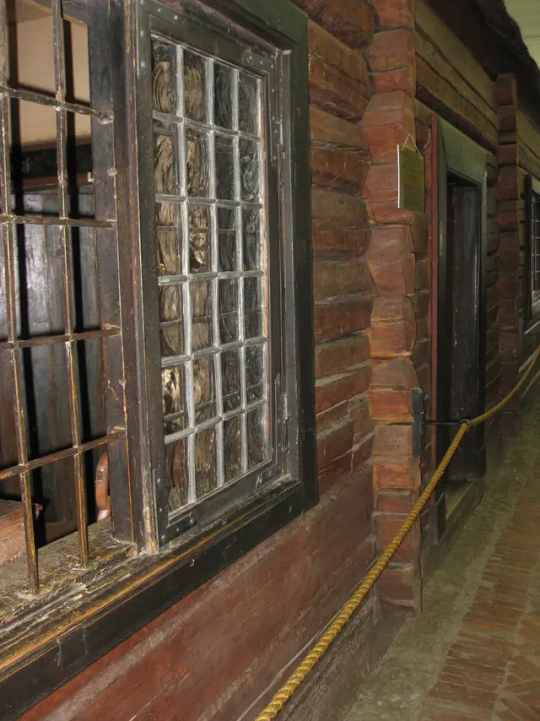
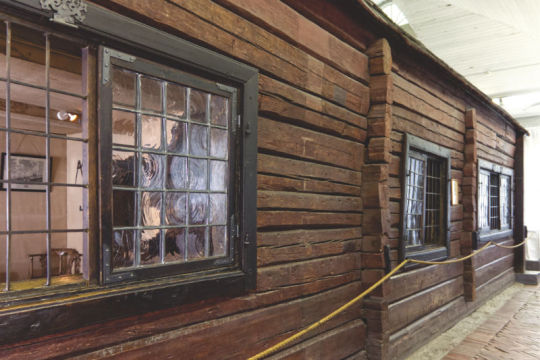
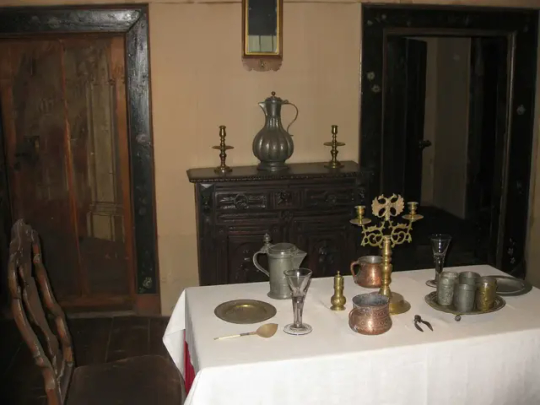
This cabin must have appeared as a huge downgrade after the wooden palace of Tsar Alexei!
The Wooden Palace of Tsar Alexei Romanov 1667
The recreation of an authentic mid-17th century Romanov residence was built recently in 2010. The Palace of Tsar Alexei Mikhailovich, also known as the Wooden Palace of Tsar Alexei, is a large wooden palace in Kolomenskoye, near Moscow, Russia.
The original was built in 1667 without using any fasten materials, nails or hooks. The wooden palace, famed for its fanciful, fairytale roofs, was a summer residence for Russian tsars before St. Petersburg was constructed.
The palace was divided into male and female halves, with the Tsar and Tsarevitches towers and chambers in the male half and the Tsarina's towers in the female half.
The palace's interior featured rich decorations, including carving, painting, gilding, and ceramic tiles, as well as rectangular and round stoves, weathercocks, and windows and porches.



Foreigners referred to this huge maze of intricate corridors and 250 rooms, as 'an Eighth Wonder of the World'. Although basically only a summer palace, it was the favorite residence of Tsar Alexei I.
The future Empress Elizabeth Petrovna was born in the palace in 1709, and Tsar Peter the Great spent part of his youth here.
Upon the departure of the court for the swamps of St. Petersburg, the palace fell into disrepair, so that Catherine the Great refused to make it her Moscow residence. On her orders the wooden palace was demolished in 1768, but thankfully, the detailed plans of the palace had survived.
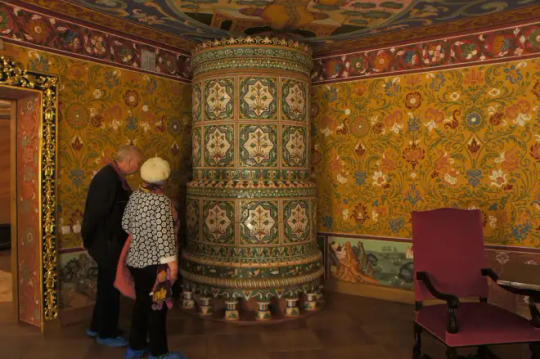
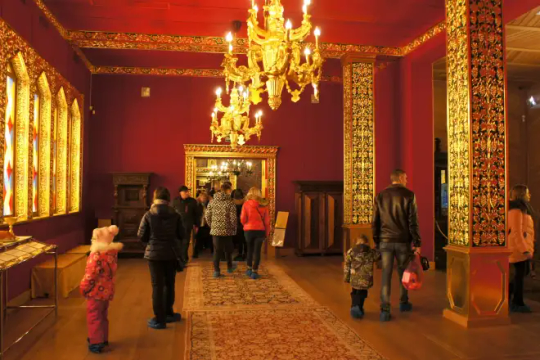
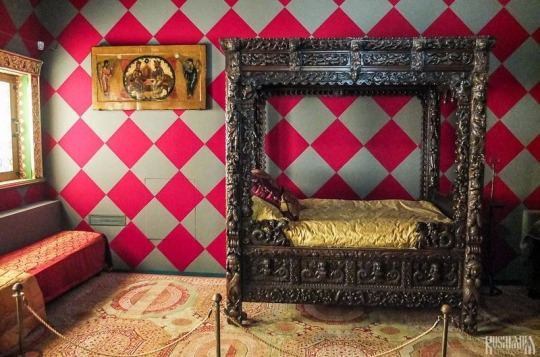


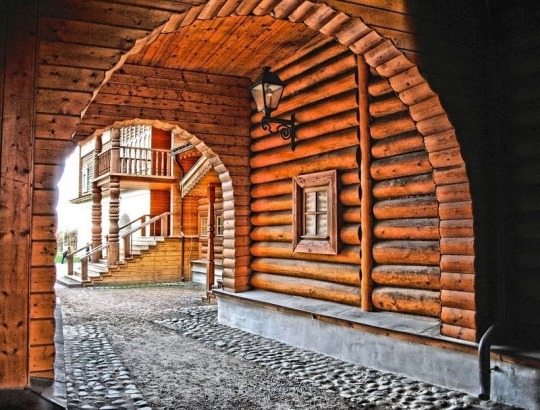
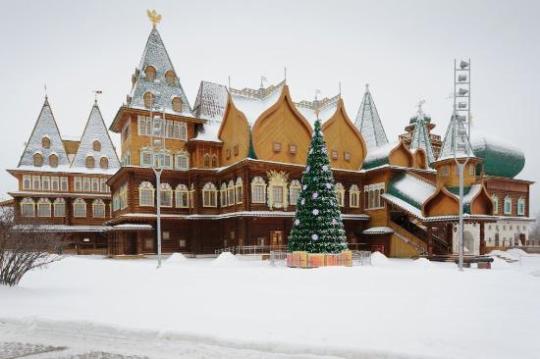
Summer Palace of Peter the Great
1714
One of the earliest imperial residences I can think of that still exists today is the modest Summer Palace of Peter the Great, which is located on an island near the Peter and Paul Fortress, the burial place of the Romanovs.
The palace was built between 1710 and 1714, a few years before the proclamation of the Russian Empire. By the time of Tsar Nicholas II's reign at the end of the 19th century, it became vacant.
During the Second World War, both the Summer Palace and Summer Gardens were badly damaged by a German bombing raid. The building was repaired, however, and the layout remains unchanged from the original.
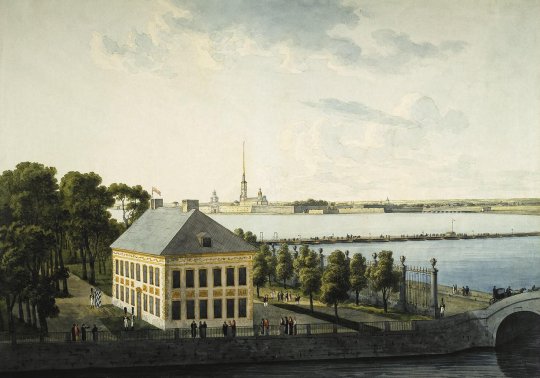
Above: The palace as depicted in 1809. Below: The residence today.

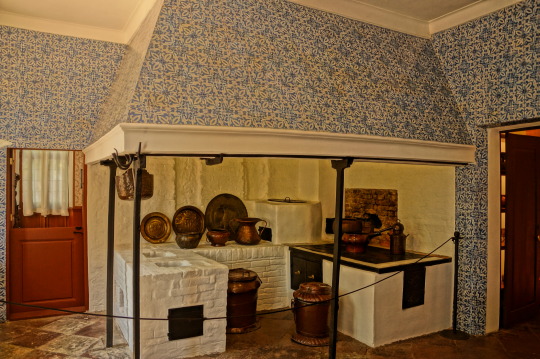
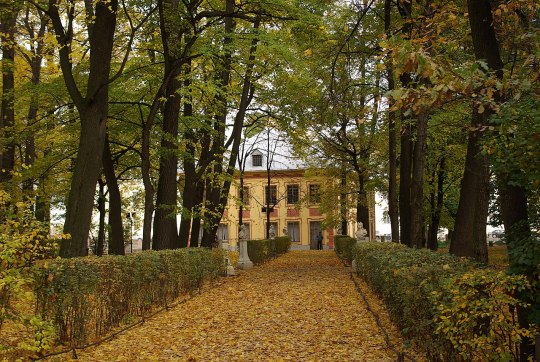
Monplaisir Palace in Peterhof 1714-1716
There is another residence owned by Peter the Great that is still standing today. And that is the Monplaisir Palace in Peterhof.
The following painting depicts the formidable Tsar and his son and heir Tsarevich Alexei Petrovich, who has been accused of preparing to seize power, in the interior of the Monplaisir Palace. Before pronouncing sentence, Peter I gazes into his son's eyes, still hoping to discern signs of remorse.


Above: The Parade Hall of Monplaisir Palace today.



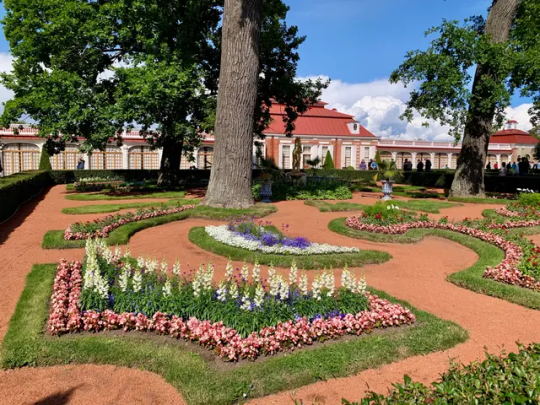
#romanov#romanovs#palace#palaces#history#russian culture#russian history#royal history#imperial russia#moscow#saint petersburg#peterhof#russian imperial family#ask
41 notes
·
View notes
Text
OTMA drawing
My drawing of the last grand duchesses of Russia, Olga, Tatiana, Maria, and Anastasia Nikolaevna Romanova.
disclaimer: i am not a monarchist. Tsar Nicholas II was a truly disgusting and awful leader, but I believe that his 5 children did not deserve their fates because of their fathers actions- which were far beyond their control.
Rest in peace, gorgeous women ☦️
(ignore my awful russian handwriting, i dont speak russian very well and i usually write in cursive)

1895, 1897, 1899, 1901 - 1918
🕊️
#art#artists on tumblr#traditional art#History#women in history#women of history#romanov#romanov family#romanov dynasty#romanov formals#romanov history#Romanov sisters#otma#otmaa#olga nikolaevna#tatiana nikolaevna#maria nikolaevna#anastasia nikolaevna#anastasia#anastasia romanov#Russia#russian history#imperial russia#royals#royal history
18 notes
·
View notes
Text

John Brown, Queen Victoria's controversial "Highland Servant", with the Queen's dogs.
39 notes
·
View notes
Text


11 Nov. 1276 - Magnus III (Magnus Ladulås) and Helvig of Holstein (sometimes wrongly called Hedvig) married at Kalmar Castle, which means Helvig became Queen of Sweden. Magnus had become King of Sweden the year before after deposing his brother Valdemar from the throne.
We don’t know when Helvig was born, but we know that her parents were Gerhard I, Count of Holstein-Itzehoe and Elisabeth of Mecklenburg. As a morning gift, Magnus gave her the farm Dåvö in Munktorp parish and three counties in Västmanland: Snevringe (where Dåvö is located), Fellingsbro and Åkerbo.
Magnus and Helvig are believed to be buried in the Riddarholms church in Stockholm. According to historical sources, Magnus, Helvig, one daughter and one grandchild were buried together in the family crypt. However, in 1915 it was discovered that the crypt housed the remains of eight people and not four. In 2011 the remains were investigated once again, only to show that no one in the crypt could be Magnus or his closest relatives.
Photo 1: Magnus's grave monument in Riddarholmskyrkan, photographed from above. The monument was sculpted by Lucas van der Werdt in 1574 and was placed over what was believed to be his family crypt (photograph from Wikimedia Commons). Photo 2: Imagined portrait of Helvig by unknown artist from unknown year (oil on canvas, 63,5 x 54,5 x 4 cm). Photo courtesy of Nationalmuseum.
#swedish royal family#royal wedding#king magnus iii#queen helvig#magnus ladulås#helvig of holstein#magnus barnlock#royal history#royaltyedit#historyedit#on this day#today in history#my upload
17 notes
·
View notes
Text

Four months before the revolution of 1830, on March 29, King Ferdinand of Spain abolished Salic law in favor of his daughter, Isabella, to the prejudice of his younger brother, Charles. When the French Bourbons were told of the news, Marie-Thérèse grumbled that France should have done the same thing long ago.
Marie Thérèse, The Fate of Marie Antoinette’s Daughter by Susan Nagel
40 notes
·
View notes
Note
What is Aguila Roja? Is it a show or a movie? Because in your posts you ranted about Aguila Roja's portrayal of Mariana.
Is there TV shows and Movies about her aside from that? I feel like Habsburgs in 17th century was often ignore by media because I don't see shows about them. There is Versailles series though if your interested.
"Águila Roja" is a Spanish adventure television series set in 17th-century Spain. Produced by Globomedia for Televisión Española, it aired on La 1 from 2009 to 2016 and has earned its status as one of the channel's most successful shows, with broadcasting rights sold in multiple countries. I must express my strong dissatisfaction with the portrayal of Mariana, as it is historically inaccurate and misleading. While I recognize that the show is a work of historical fiction, it is essential to accurately depict real-life individuals, especially lesser-known historical figures. The portrayal of Mariana as vain, selfish, and promiscuous—engaging in an affair with the fictional character Cardinal Mendoza. This plotline creates a distortion of her character. In reality, Mariana was a devoted wife, loving mother, intelligent, strong, loyal, dutiful, strict, tactile, and pious. These traits are glaringly absent from her depiction in the series. Although some scenes show her as a caring mother and wife, particularly when she comforts Felipe, these moments are far too few and are overshadowed by their frequent conflicts. Shows like this must uphold historical integrity, as misrepresentation can lead to widespread misconceptions.
Beware my friend as the worst is yet to come, I stumbled upon this video on YouTube. To those who are curious to watch this scene, it features graphic content.
youtube
There is more than one scene but I refuse to post the links because as you can see this one is already terrible. The other scenes just featured her getting kidnapped, tortured, tying her to a tree, and lifting her up in the air.
I was mortified upon witnessing it! The need to showcase the character getting tortured and almost burnt at the stake! I do not understand the reason or context of this scene at all! This scene is not only inaccurate and degrading, but It is also an insult to her name, real-life experiences, and legacy.

Apart from her portrayal, her costumes were as expected inaccurate, The outfits that Lucía Eliana Sánchez wore in the series, in my opinion, did not fit the way of dressing at the time. Both the exaggerated neckline and the shapes of the silhouette did not correspond to the attire worn at that time, and even more so, by such a leading figure.
In Spain, women did wear a neckline, as we can see in some paintings, but a plunging neckline would not have been common for the queen herself. The feminine style of the dress at the time was the so-called guardainfante, a huge frame in the shape of an inverted basket on which the basquiña (skirt) was placed. The bodice or sayo was tight, between the fabric and the lining there was a rubberized cardboard that literally crushed the chest. According to the historian Maribel Bandrés: “… it was so hard and flat that the body lost its natural shape. To give it even more rigidity, it had two whalebones coming down to a point in front: the busc .” The neckline was covered with a striking collar called a valona cariñana with a beautiful decoration of pleats called abanillos. This type of collar was very flattering and a large brooch was placed in its center.

Diego Velázquez. Mariana of Austria. Detail of head. Circa 1652. Prado Museum. Madrid.

Eliana Sánchez is characterized as Mariana of Austria.
In this particular scene, I noticed Mariana's dress. I've seen that dress before in other Spanish shows and on Pinterest, which led me to believe they recycled this costume. While I appreciate when costumes are reused in different shows, in this case, the setting is in the year 1660, as they discuss Maria Theresa's upcoming marriage and mention that Margarita and Prospero are present. They look completely different from their historical counterparts.
youtube

Yes, apart from Aguila Roja, She was featured briefly in documentaries such as Memoria de Espana and Habsburgs heimliche Herrscherinnen- Auf fremden Thronen
youtube
I agree with you this century is often ignored by the media or the ones that usually don't get that much attention even though their stories are good and interesting. My favorite portrayal of her, Is the Memoria de Espana's Mariana, The costumes and mannerisms are perfect.
#history#mariana de austria#house of habsburg#spain#17th century#please like and reblog#habsburg#german history#spanish history#european history#royal history#women in history#justice for Mariana of austria#that scene was hard to watch#I need more than bleach to recover from that#asks answered#asks <3#fashion history#historical fashion#dress history#thanks for bearing with me#my thoughts and opinions#aguila roja#feel free to correct me#austria
22 notes
·
View notes
Text
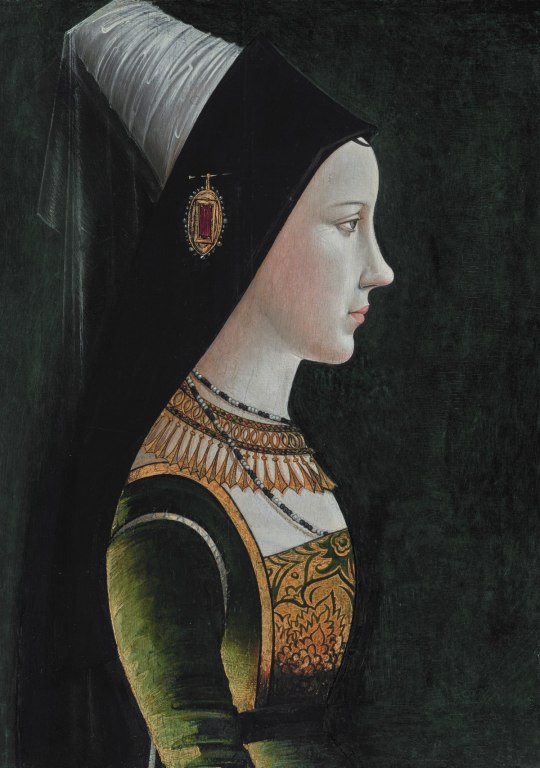


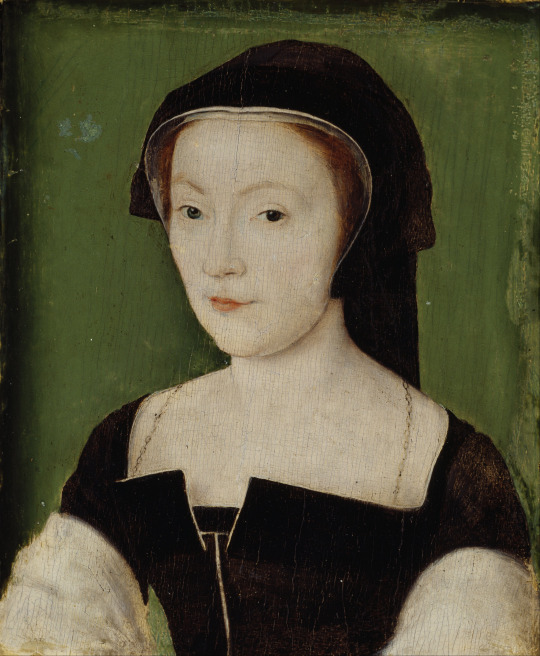
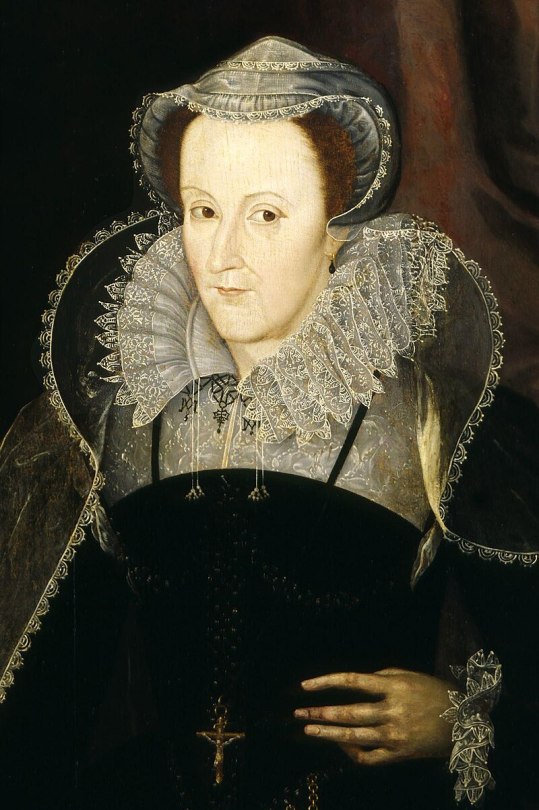
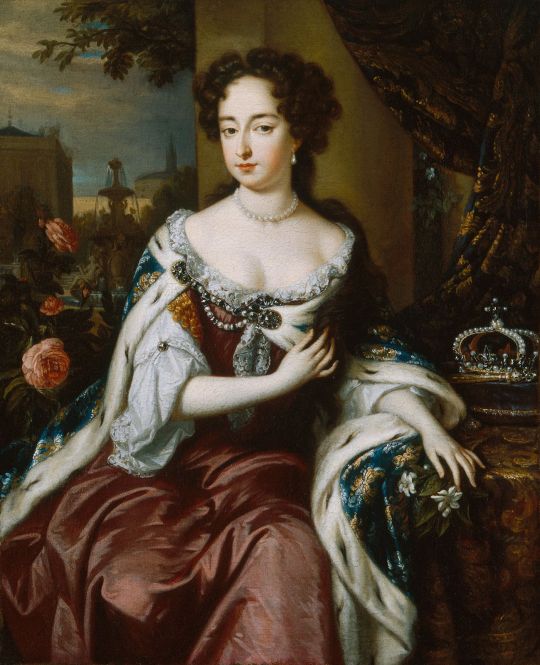
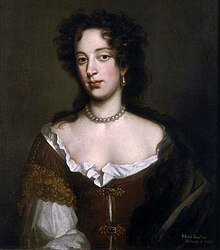

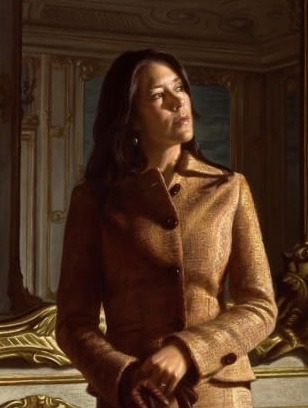
9 Royal Mary’s of history - Reigning and Consorting: -> 1. Mary of Burgundy: Consort of Maximilian I, Holy Roman Emperor (1457–1482). -> 2. Mary of Hungary (Mary of Habsburg): Queen consort of Louis II of Hungary and Bohemia (1505–1558). -> 3. Mary I of England: Reigned 1553–1558 (1516–1558). -> 4. Mary of Guise: Queen consort of James V of Scotland, regent for Mary, Queen of Scots (1515–1560). -> 5. Mary, Queen of Scots: Reigned 1542–1567 (1542–1587). -> 6. Mary II of England: Reigned 1689–1694 (1662–1694). -> 7. Mary of Modena: Queen consort of James II of England, regent for James Francis Edward Stuart (1658–1718). -> 8. Mary of Teck (Queen Mary): Consort of George V of UK, reigned 1910–1936 (1867–1953). -> 9. Mary Elizabeth Donaldson (Queen Mary): current Queen consort of Frederick X of Denmark since 14th January 2024 (1972-).
#ktd#Royal history#european history#Mary I#mary ii#mary queen of scots#queen mary#Mary of teck#Mary of Modena#Mary of guise#Mary of burgundy#Mary of Hungary#European royalty#royal#royalty#brf#british royal family#british royalty#british royal fandom#Art#art history#Denmark
73 notes
·
View notes